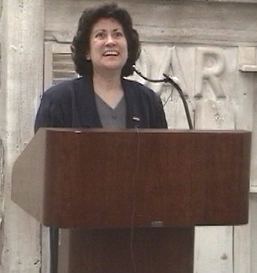Volume 1 Number 1 ~ Fall 1998
AMERICAN WOMEN AND THE MAKING OF MODERN CONSUMER CULTURE
Kathy L. Peiss
Kathy Peiss is currently a Professor of History at the University of Massachusetts. She has written and lectured on American women's history and cultural history for fifteen years. Her first book, Cheap Amusements (1986), explored the social life of working women in turn-of-the-century New York, and a coedited anthology, Passion and Power (1989), surveyed the history of sexuality. Love Across the Color Line, on an interracial romance in Massachusetts in the early twentieth century, was published in 1996. Her new book, Hope in a Jar: The Making of America's Beauty Culture (Metropolitan Books/Henry Holt, 1998), examines the history of the mass-market beauty industry and the changing cultural meaning of cosmetics for American women. Peiss has consulted on documentary films and museum exhibits, including a Smithsonian Institution show on costume and gender, for which she coauthored the exhibition booklet. She has also been interviewed on the history of cosmetics and beauty by CNN, the Washington Post, New York Times, Philadelphia Inquirer, Allure, Out, and other publications.

Peiss received her B.A. from Carleton
College in 1975 and completed her doctorate at Brown University in 1982.
She has taught at Rutgers, Cornell, and the University of Maryland Baltimore
County, where she developed a Women's Studies program. She has been teaching
at the University of Massachusetts at Amherst since 1986 and currently
serves as Director of the History Graduate Program there. Among Peiss'
many honors are fellowships from the National Endowment for the humanities,
American Council of Learned Societies, Smithsonian Institution, Rutgers
Center for Historical Analysis, and the Woodrow Wilson Foundation.
The following lecture by Prof. Peiss was
delivered at the University at Albany - State University of New York on
March 26, 1998. The text
of her lecture, with additional notes, is also available.
Kathy Peiss' lecture and her response to audience questions have been digitized. Two versions of each audio file are available -- one for slow modem access, and one for faster connections.)
- Kathy
L. Peiss's Talk (for slower internet connections -- 14.4
Kb/sec modems and above)
Kathy L. Peiss's Talk (for faster internet connections -- 28.8 Kb/sec modems and above)
Answers to Audience Questions: (There was no audience microphone, so all questions are transcribed. Kathy Peiss' answers, however, were recorded clearly. Click on the icons following each question to hear her response.